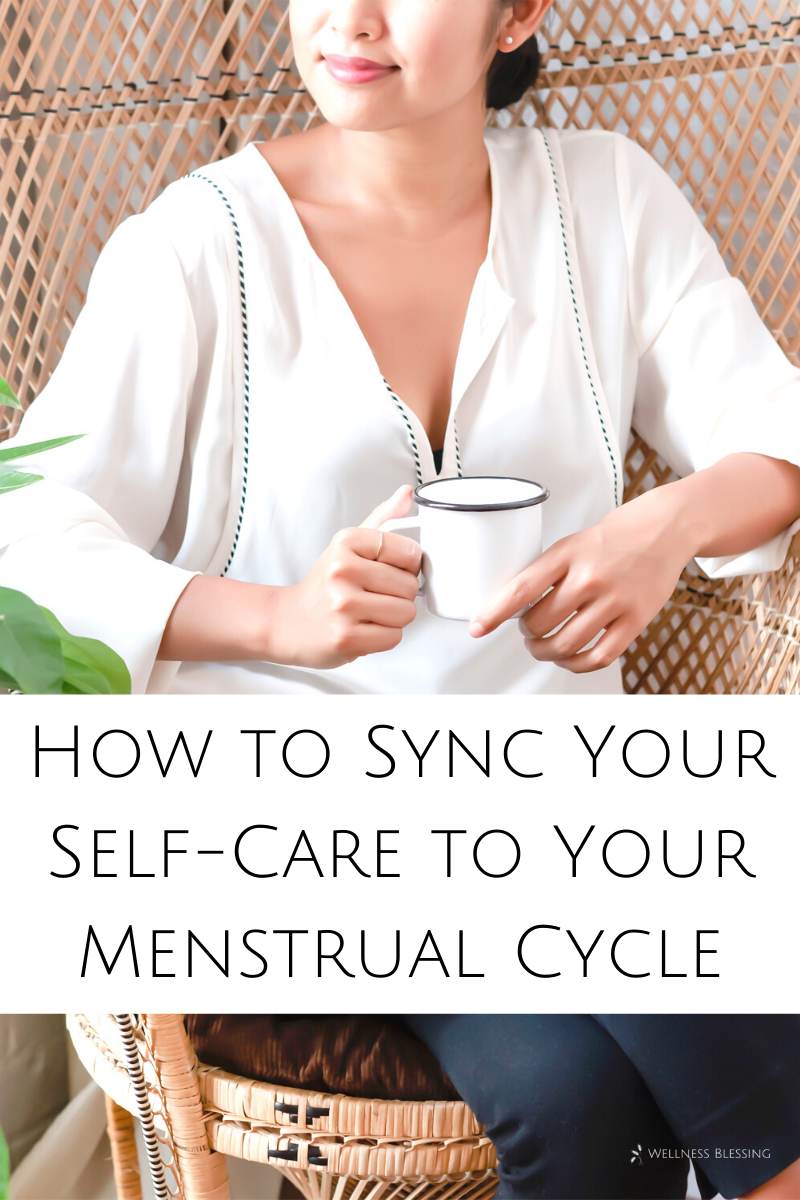How to Sync Your Self-Care To Your Cycle: Know Your Menstrual Phases
Do you know where in your cycle you are right now?
Tracking your menstrual cycle does more than helping to prevent unexpected surprises. Women are paying greater attention than ever to their menstrual cycles to get to know their bodies better and optimize their health.
Menstrual cycle tracking helps women to increase awareness of how they feel in the different stages of their cycle. This knowledge can help women to take control of their fertility to prevent or plan pregnancy, to adjust their wellness practices based upon their cycle stages, and to be prepared for hormonal shifts.
Your menstrual cycle is unique and changes every month and throughout your life from menarche to menopause.
The menstrual cycle begins on the first day of menstruation and continues until the next period starts. On average, women’s cycles are 28 days but can vary from 24 to 38 days.
The length of a cycle can change from month to month and throughout your life. During times of hormone fluctuation, it is common for cycle lengths to change, especially during puberty, postpartum, perimenopause, and due to stress or environmental factors.
The Menstrual Cycle
Follicular Phase
The first half of the menstrual cycle is the follicular phase from the time menstruation starts until ovulation mid-cycle. This is when an egg is being prepared to be released from an ovary and the uterine lining thickens.
At the beginning of the follicular phase is menstruation which lasts from 3 to 8 days, usually around 5. Then, ovulation happens around day 14 of the cycle when an ovary releases a ripened egg into a fallopian tube.
There are usually two weeks to each half of your cycle.
Week one is menstruation and is a time to focus on rest, nourishing foods, restorative exercise, walking in nature, and excellent hydration. It’s an excellent time to enjoy warming foods and nourishing herbs, including soup and herbal tea.
Week two is a time for more active exercise, starting new healthy habits, eating lots of fiber-rich fresh foods, and is a good time for massage or bodywork. This is a good time to be sure to eat fresh probiotic foods such as sauerkraut, kimchi, yogurt, kefir, and fermented vegetables, which are helpful to support the gut microbiome and hormone regulation.
Luteal Phase
The second half of the cycle is the luteal phase from the time of ovulation until the next period starts.
During the first 24 hours of the luteal phase, the ripe egg sits in the fallopian tube waiting to be fertilized. If conception does not occur, then the egg dissolves, and estrogen and progesterone levels will drop until the low hormone levels at the end of the cycle trigger another menstruation.
Toward the end of the luteal phase, many women commonly experience premenstrual symptoms.
The two weeks of your luteal phase can have very different energies.
Week three of your cycle is a time when you are usually feeling really good and is a great time for high-intensity workouts or strength-training and being sure to eat nutrient-dense whole foods, especially organic fruits, vegetables, nuts, and seeds.
Week four of the cycle is a time to focus on stress management, exercise, and good nutrition. Nutrient-dense foods to enjoy include dark leafy greens, salmon, eggs, nuts, and pineapple. I particularly enjoy organic dark chocolate at this time of the month too.
How to Track Your Cycle
It’s really important to know when to expect your menstrual cycle to start and what phase of your cycle you are in throughout the month.
With cycle awareness, you can optimize your nutrition, exercise, and self-care practices to support your hormones and womb health.
You can get in sync with the stages and rhythm of your menstrual cycle to support your health, mood, and hormones.
Throughout your cycle, it’s important to focus on a balance between activity and rest, and manage stress levels through spending time in nature, getting daily sunlight and fresh air, and focusing on eating anti-inflammatory foods.
Tracking your cycle can help you to understand the hormonal changes you go through each month, and how healthy self-care practices can help you to navigate your womb health with confidence.
There are many ways to track your cycles today, from menstrual health apps to specialized calendars.
I’ve been tracking my menstrual cycle for over 20 years and I’ve tried a variety of different methods from analog to digital.
Currently, I simply keep track of my cycle and take notes in my personal Google Calendar app, which is convenient because it syncs across all my devices. My menstrual cycle notes are color-coded red so I can easily look back through my calendar and find the dates.
I find this works well for me, but if you are tracking your cycle for fertility awareness purposes, you will need a more comprehensive chart or app to keep notes on your daily basal body temperature and fertility signs too.
Through knowing your cycle phases you can optimize your health, creativity, and performance - and increase your energy, libido, and fertility.
Knowing where you are in your menstrual cycle is vital information that every woman should be aware of.
Through this knowledge, you can make conscious choices to empower your menstrual health by syncing your self-care to your cycle.



